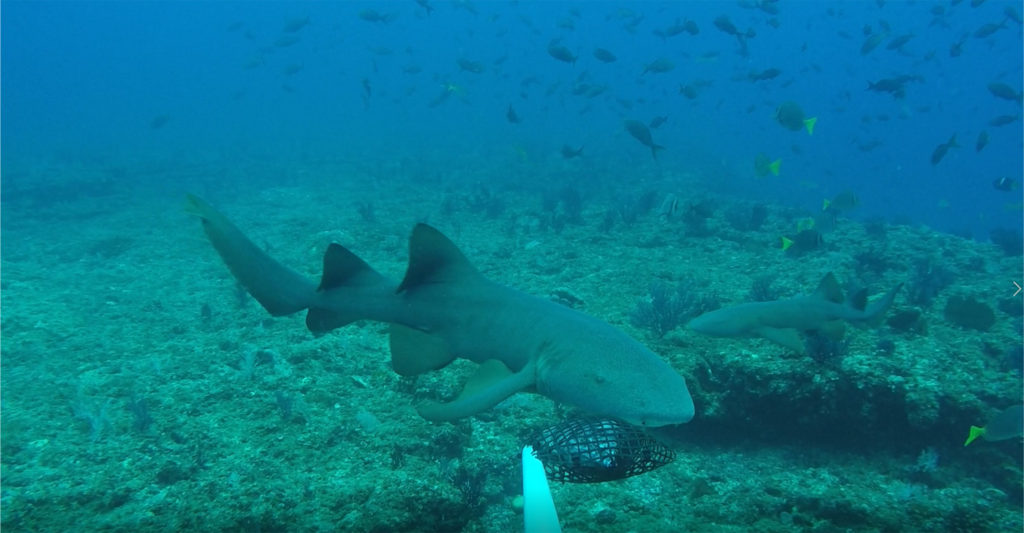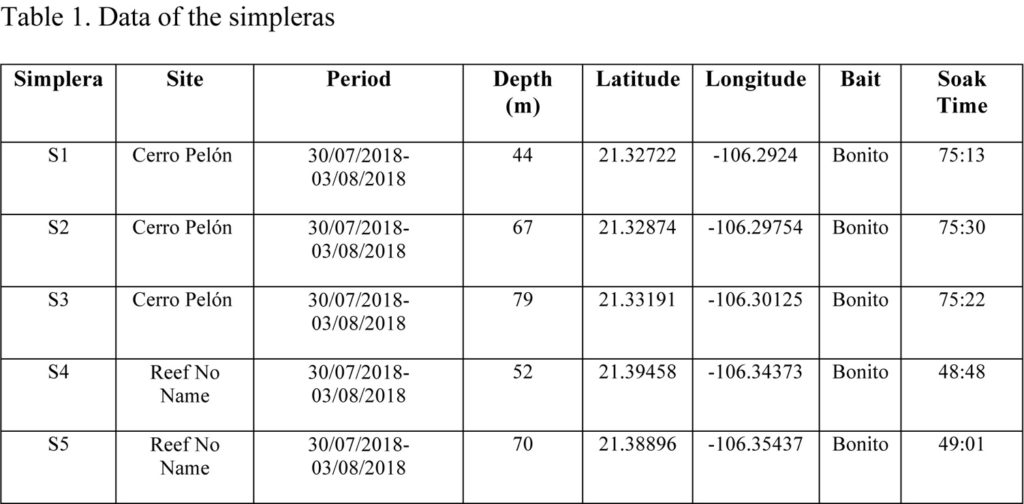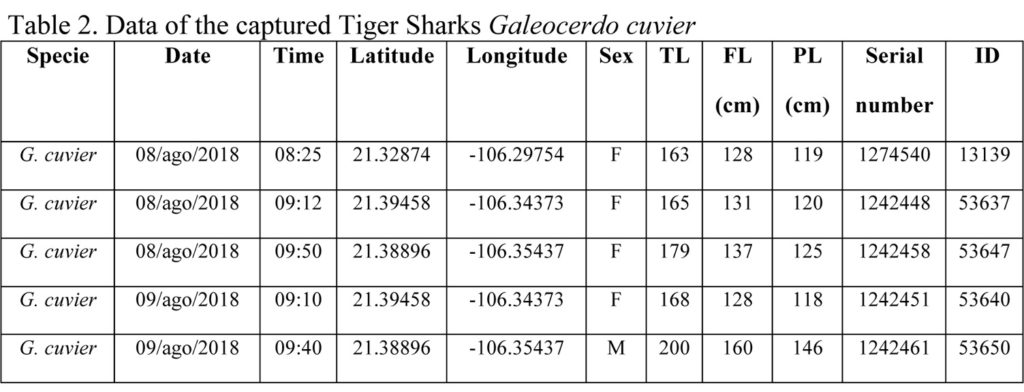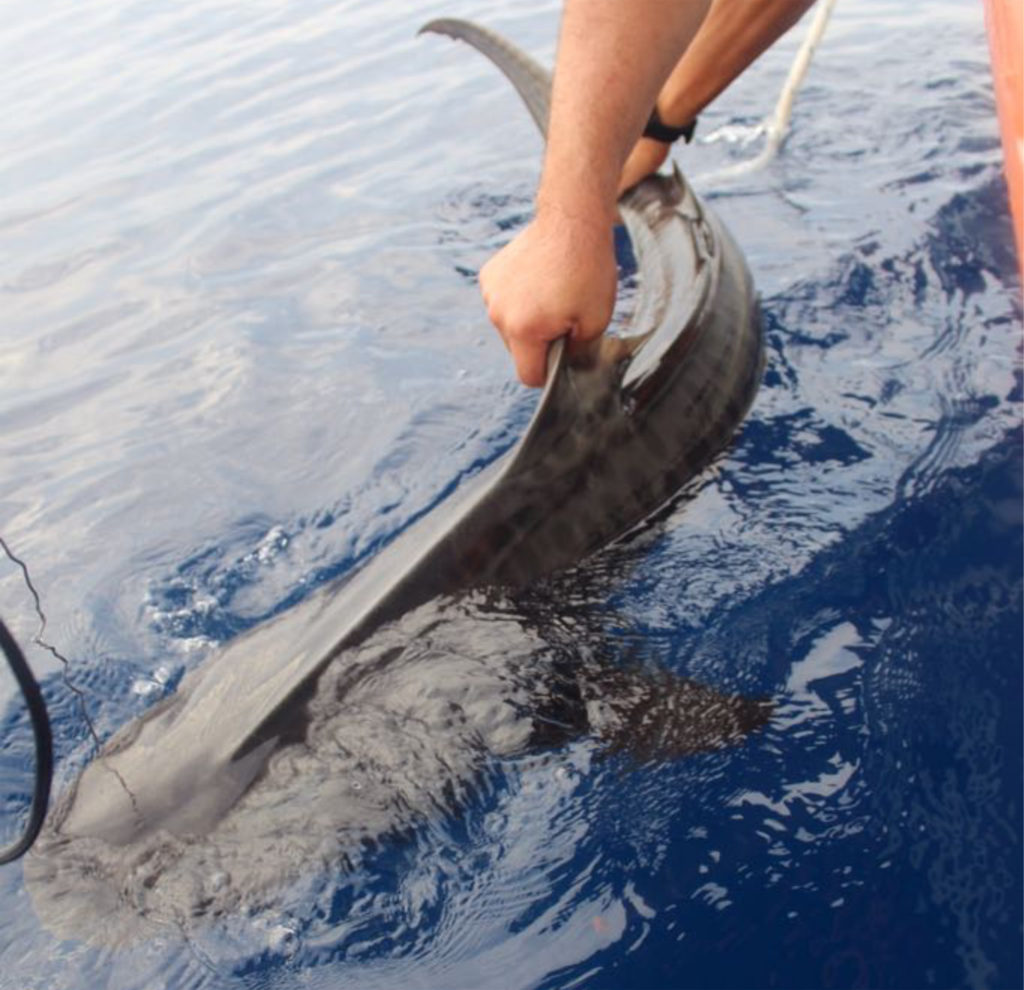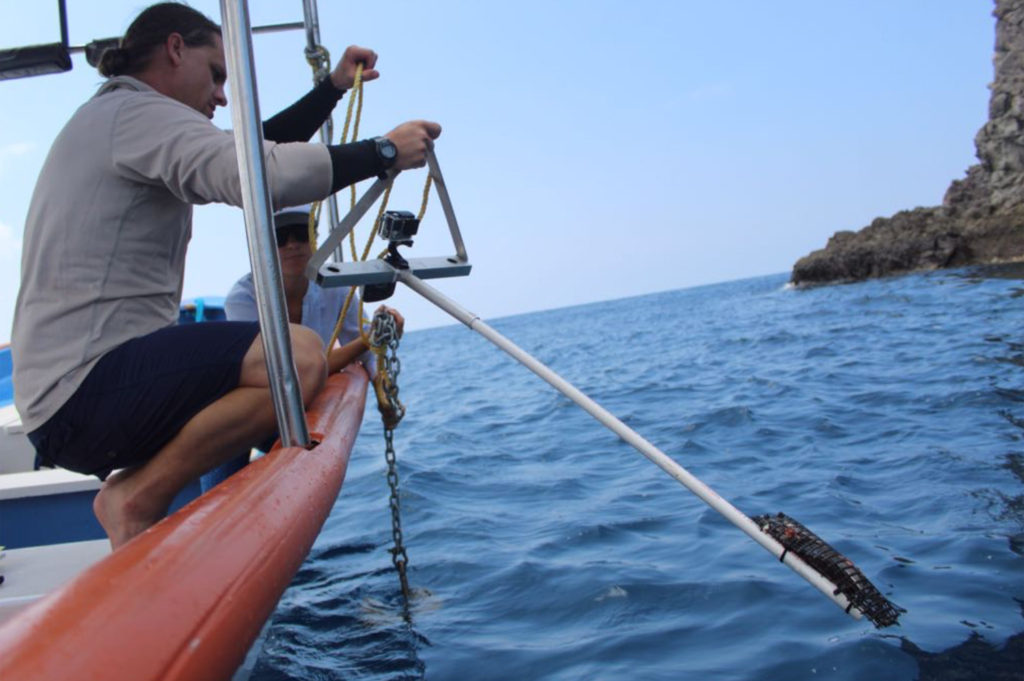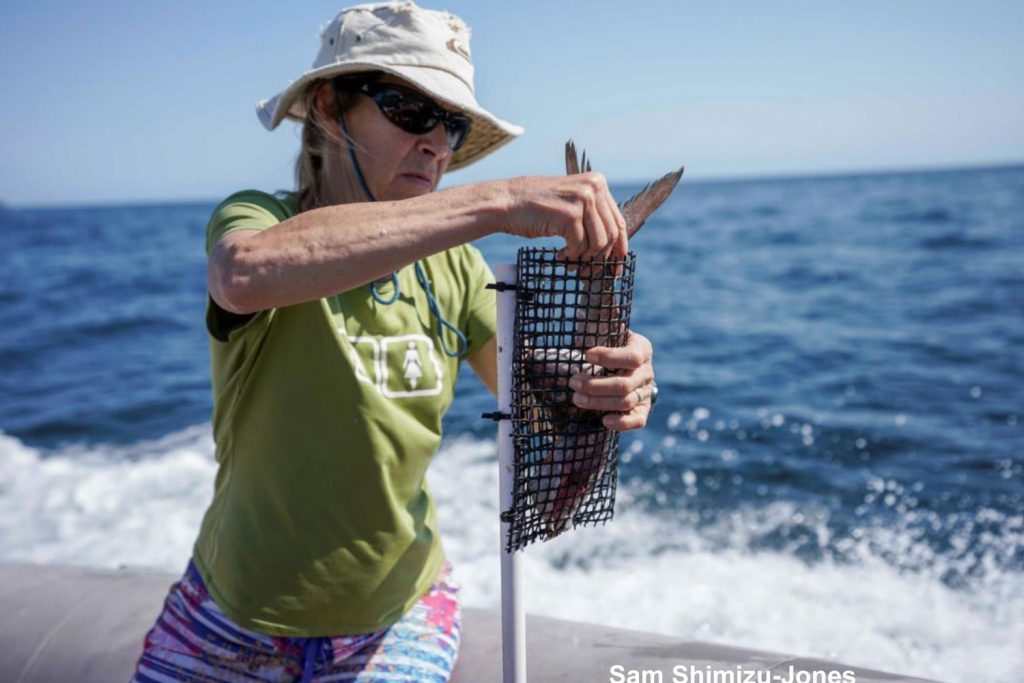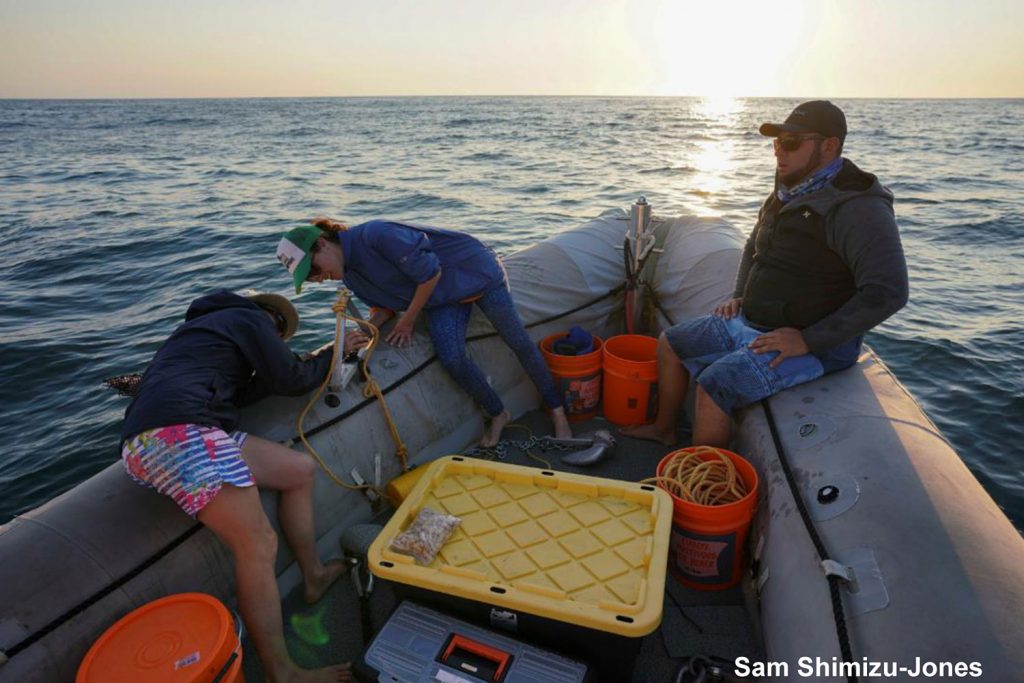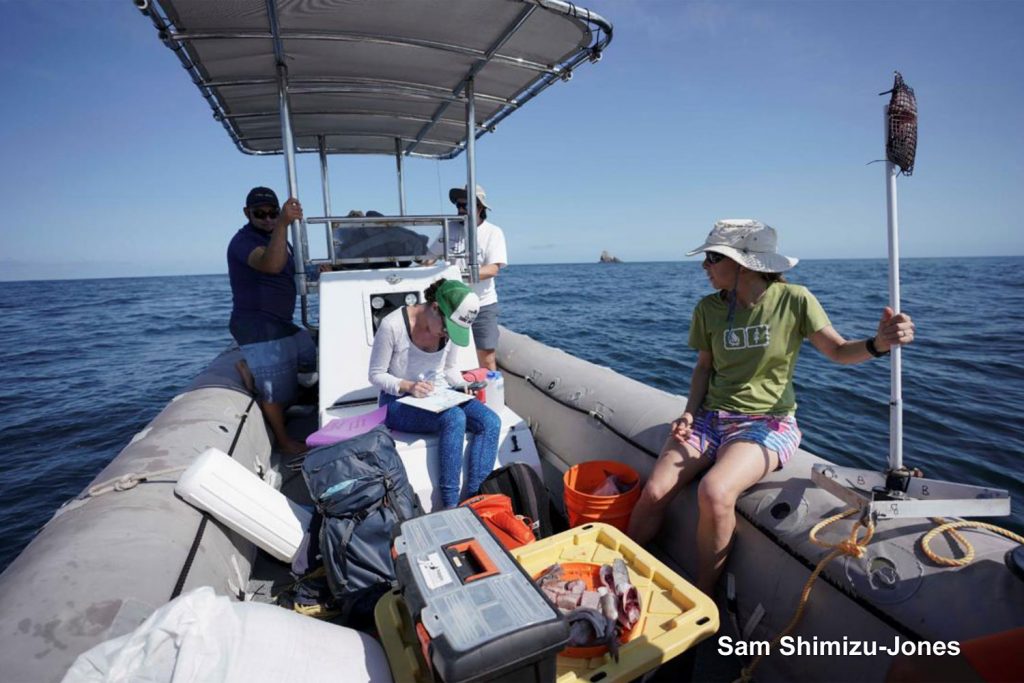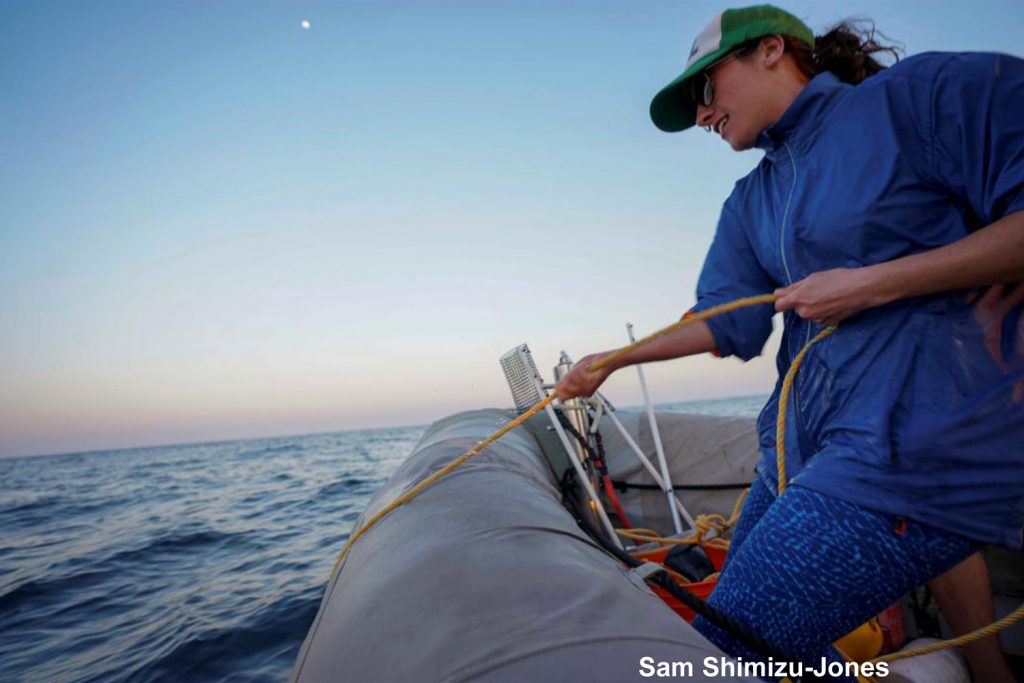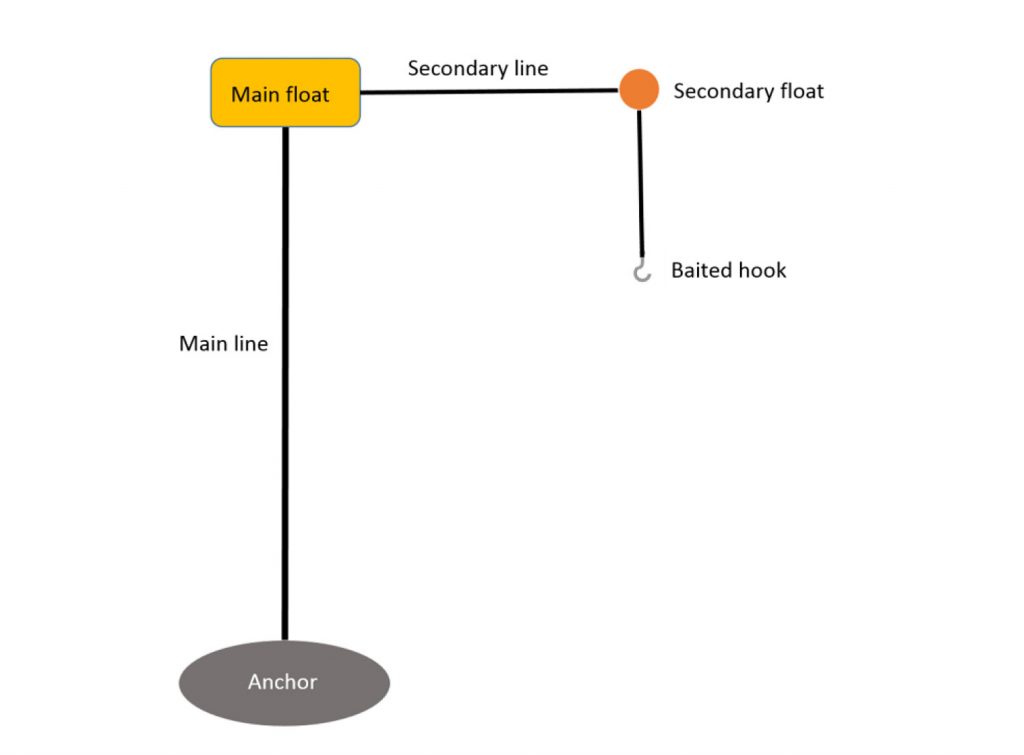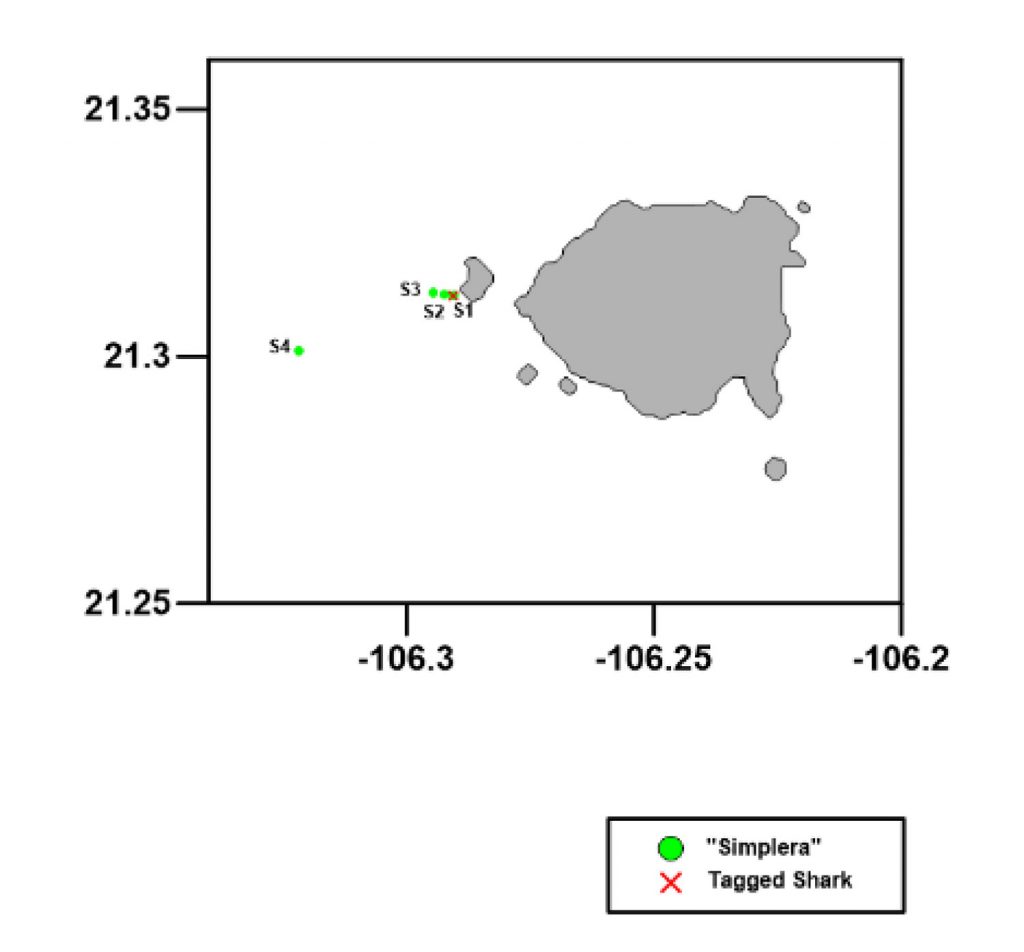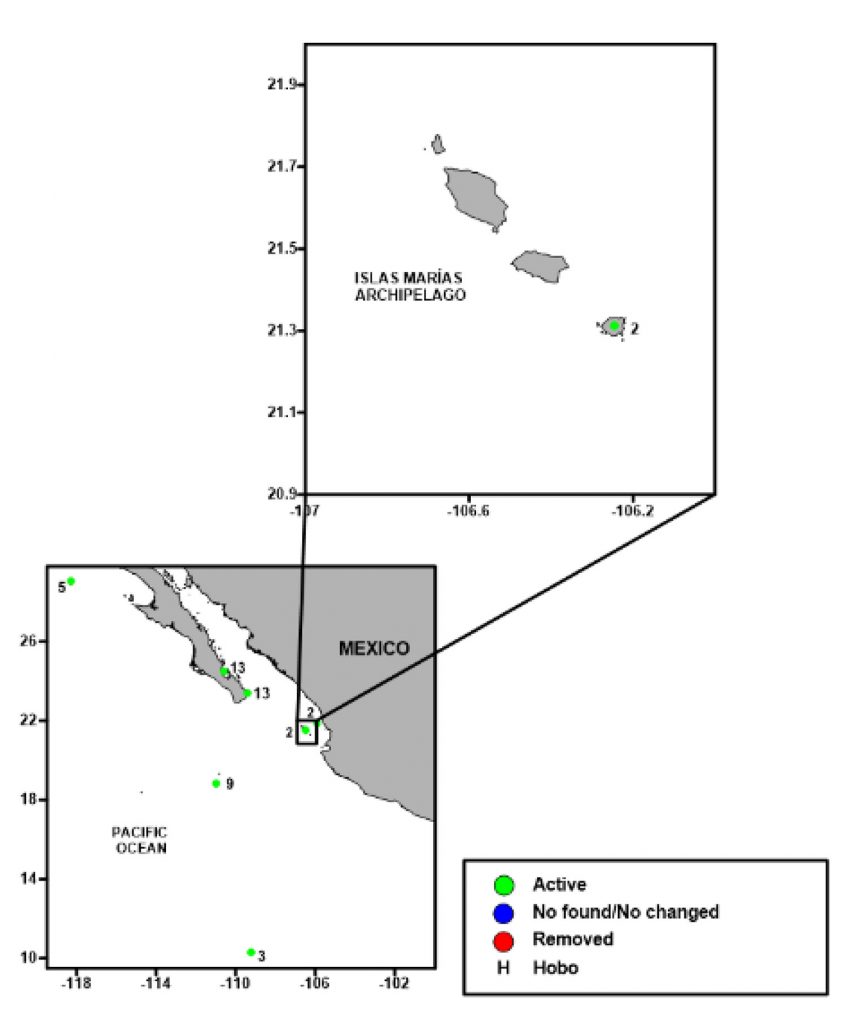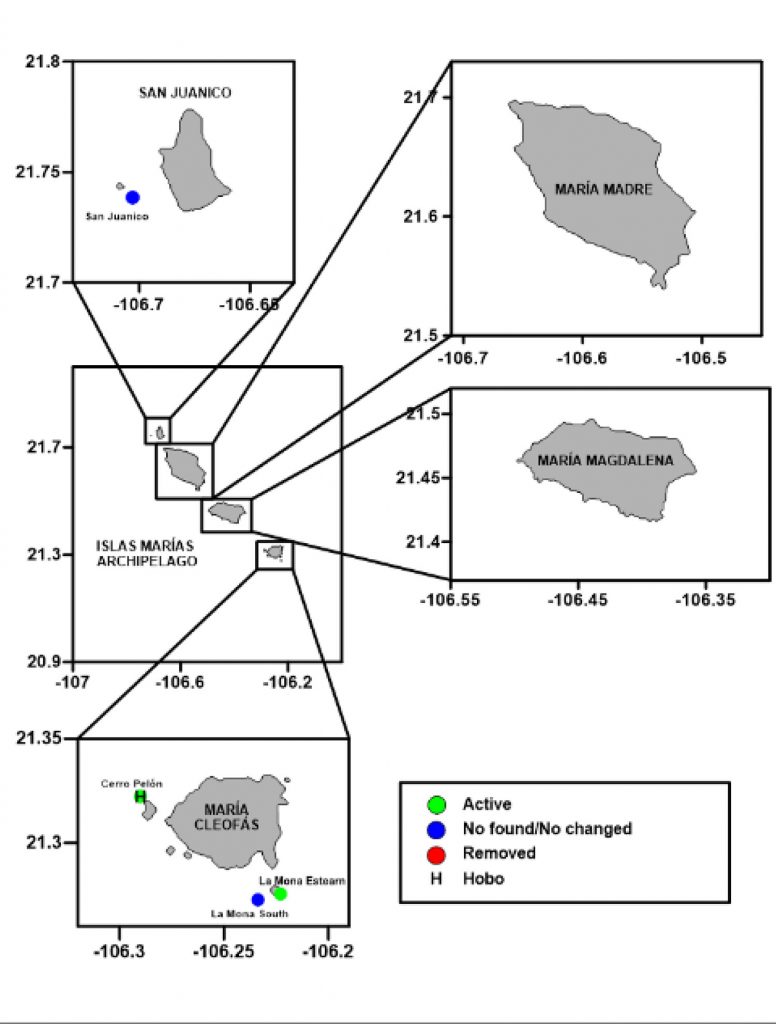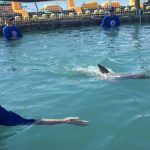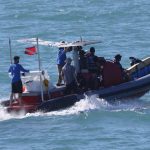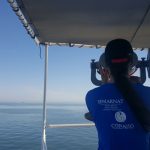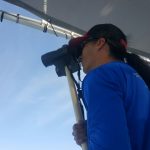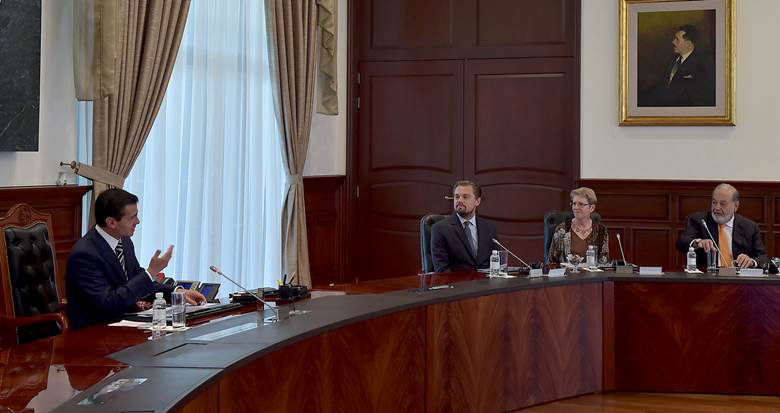2nd Expedition Report
Erendira Aceves-Bueno, Jennifer Caselle, James Ketchum, Abel Trejo, Darcy Bradley, Jono Wilson
Bren School of Environmental Science & Management, UC Santa Barbara
Marine Science Institute, UC Santa Barbara
Pelagios- Kakunjá A.C.
Prozona – Grupo Cleofas
The Nature Conservancy
Download the Complete Report
Isla Marias Predator Diversity and Abundance Report 2nd Expedition PDF | 14.1 MB
Background
According to historical and anecdotic evidence, the Islas Marias archipelago has an important ecological role in the Mexican Pacific. Due to its potential role in the life history of the eastern pacific fauna, as well as the presence of many endemic and threatened species, the Mexican government created a biosphere reserve that protects the entire archipelago. The area was also declared a UNESCO World Natural Heritage Site in 2010.
Depict its ecological importance, limited information on the archipelago’s marine life exists. These conditions make the Islas Marias archipelago a unique region to study local ecological dynamics, as well as a priority for marine conservation efforts in the Mexican Pacific.
Current research projects are advancing our understanding of the local coral reef biology of the area. However, little to no current scientific studies exist that analyze the role of the archipelago in the ecology and conservation of marine megafauna and apex predators of the region. Analyzing the diversity, local abundance, residence time, and migratory patterns of top predators is an important first step in understanding the ecological role of the archipelago, as well as the efficacy of the marine park in protecting these threatened species. Furthermore, assessing elasmobranch abundance inside the protected area – particularly in the area adjacent to the well protected waters of Maria Madre – can provide a baseline to assess the depletion of sharks throughout the region.
This project aims to provide the first comprehensive analysis of predator abundance, diversity and movement in the area, with a particular focus on elasmobranch species. In a collaborative effort, scientists from UC Santa Barbara, Pelagios-Kakunja A.C. and Prozona- Grupo Cleofas performed a trip to Isla Maria Cleofas to initiate the project.
We performed our first expedition to Isla Cleofas in March 2018. We observed one nurse shark, two diamond rays and placed a sonar tag in one Dusky shark (Carcharhinus obscurus). Compared to other areas where we have worked, these results indicated low predator density. However, our results could have been affected by poor visibility conditions or could be a consequence of seasonal predator behavior. Here we are presenting the results of our second expedition in July-August 2018.
Objective
Our project aims to establish a baseline of predator diversity and abundance in the Islas Marias Archipelago, with a focus on elasmobranch species. The first phase of the project assessed the feasibility of examining long-term spatial and temporal patterns in elasmobranch movement and habitat utilization at Islas Marias. Specifically, our research focused on:
- Assessment of the relative abundance of predators, with particular emphasis on elasmobranchs, in Isla Maria Cleofas.
- Assessment of the diversity of predators, with particular emphasis on elasmobranchs, in Isla Maria Cleofas.
- A preliminary analysis of spatial dynamics of elasmobranch populations (e.g. acoustic tagging, satellite tagging) in the archipelago.
Performed Activities
An initial relative abundance and diversity of predators was assessed using baited remote underwater video (BRUV). BRUV surveys are a standard tool for monitoring large bodied, potentially cautious reef fish including sharks. They are non-invasive and repeatable and collect data on the relative abundance and distribution of the marine faunal community, particularly for motile fauna.
A BRUV system consists of GoPro Hero cameras – one camera for a standard system, two cameras for a stereo system – mounted on a metal frame. BRUV systems are baited with 1 kg of mackerel or other oily fish, cut into small pieces and contained within a mesh bait canister to allow a bait plume to form (Fig. 1). The bait canister is positioned so that it appears in the video frame. BRUV systems are lowered to the reef floor from the boat using a surface line; a buoy attached to the surface line marks the position of the BRUV for retrieval (Fig. 2). BRUVs were deployed for approximately 60 minutes (not including deployment and retrieval time); all BRUVs were set at depths between 5-100 m (most <40 m) during daylight hours (06:00 h – 18:00 h) (Figs. 3a & b). Simultaneous BRUV surveys were set with a distance of approximately 700m between surveys around the entire perimeter of Isla Cleofas (Fig. 4).
We used a traditional hook and line fishing gear, called “simplera” to capture elasmobranchs around the perimeter of Islas Marias (Figs. 5a & b). The simplera consists of a fixed main line anchored up to 1000m deep. The line is attached to a floating hook and line system that allows the shark to move when captured, and reduces any negative impacts due to fishing. Captured sharks were brought to the side of the boat to obtain tissue samples and to place an acoustic tag (Fig. 6).
Preliminary Results
BRUVs:
- We deployed 50 BRUVs cameras in the entire perimeter of Cleofas Island and in a reef recently found between Cleofas and Magdalena Islands called “no name reef” (Figs. 1 and 2).
- Nurse sharks were commonly found in the videos (Fig 3).
- The good visibility conditions allowed us to observe nurse sharks and other fish predators, including members of the Lutjanidae and Carangidae families.

Shark Tagging:
- 5 simpleras were set at different depths and were left active 24hrs during the 5 days of the trip. The simpleras were constantly monitored (Table 1).
- 5 tiger sharks (Galeocerdo cuvier) were captured (Fig. 1) and acoustic tags were placed inside of abdominal cavity (Table 2)
- Fin clips for genetic and blood samples for trophic analysis were collected of the captured shark.
- 2 simpleras were placed in the center of the channel between Maria Cleofas island and Maria Magdalena island (Fig. 1). These 2 new simpleras captured 4 tiger sharks in a two days period, indicating that this area could be a hot spot for tiger sharks.
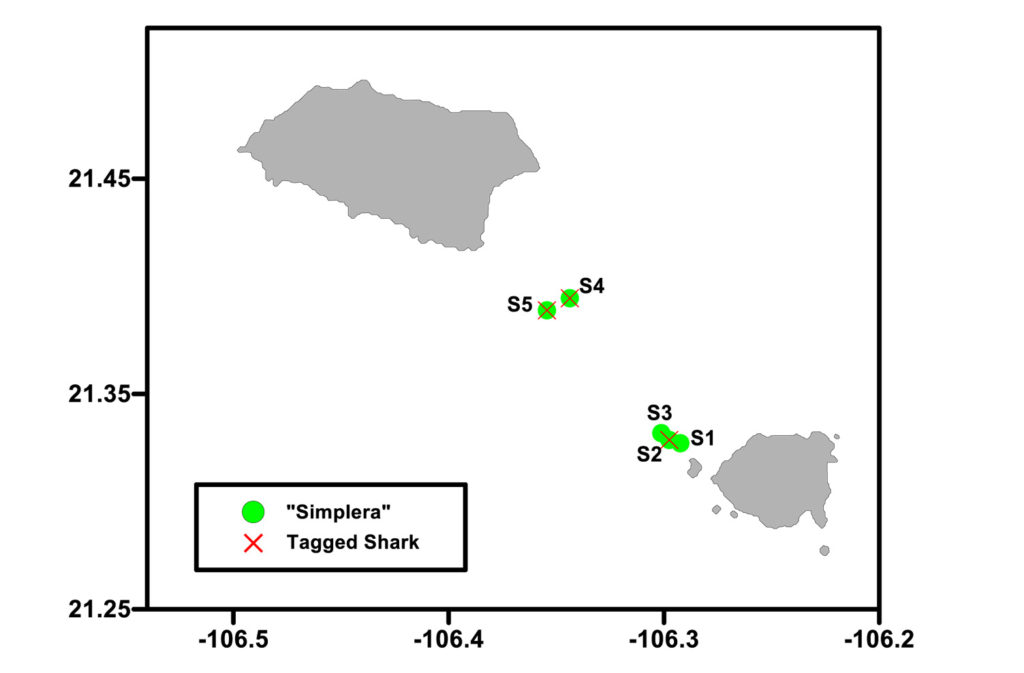
APPENDIX: RESEARCH TEAM
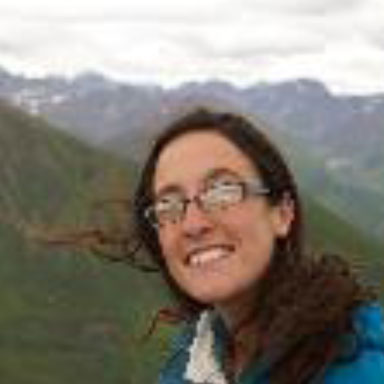
Erendira Aceves-Bueno, PhD
Project Coordinator
I am a staff researcher at the Bren School of Environmental Science & Management at UC Santa Barbara. I am broadly interested in developing management tools that can help solve and prevent over-exploitation in marine ecosystems. My research seeks to understand the social and ecological consequences of different spatial management tools, such as Marine Protected Areas (MPAs), to inform policy-making. I apply novel methodologies by combining tactics from diverse disciplines, including ecology, economics and anthropology. In Islas Marias, I am currently coordinating a collaborative effort to understand the role of this MPA in marine megafauna and apex predator conservation.
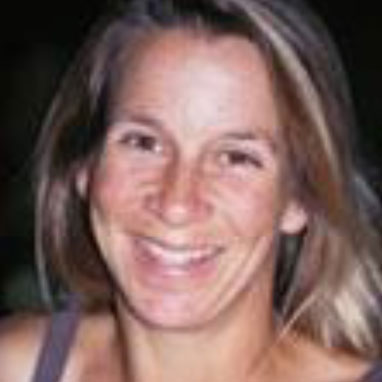
Jennifer Caselle, PhD
Lead Scientist
I am a Research Biologist at the Marine Science Institute at UC Santa Barbara. My research is broadly focused on marine conservation and reef ecology. I currently work in both coral reef and kelp forest ecosystems studying community dynamics, recruitment and larval dispersal and movement patterns of fishes. I also manage a large-scale field- based monitoring program of kelp forests in the California current ecosystem with goals of assessing long-term changes due to climate and anthropogenic impacts.

James T. Ketchum, PhD
Lead Scientist
I have studied sharks for the last 15 years of my career, focusing particularly on the ecology of whale sharks in the Gulf of California and the movement of hammerhead sharks in the Galapagos Islands. Currently I study the behavior of many species in the Mexican Pacific and the Eastern Tropical Pacific. I am a founder of Migramar focused on research on marine migratory species, as well as co-founder and president of Pelagios-Kakunjá, A.C.
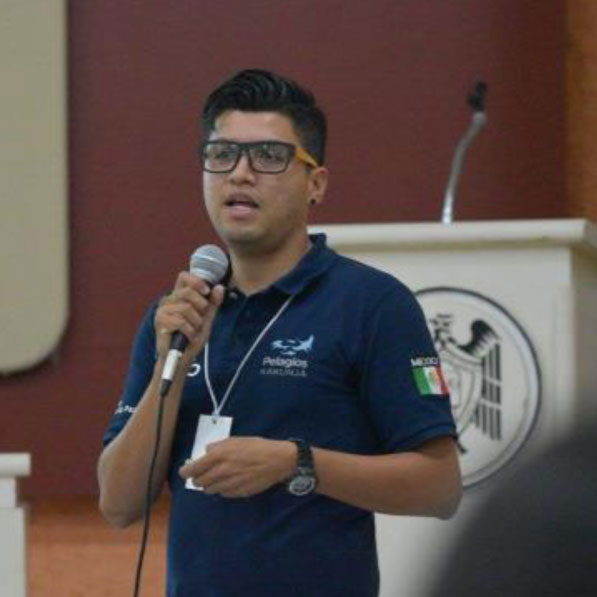
Abel Trejo Ramirez, MS
Staff Scientist
I have participated in several shark fisheries research projects in the Mexican Pacific. I have also performed research on captive sharks for the Guadalajara Zoo aquarium. I am currently collaborating with Pelagios-Kakunjá in shark surveys, as well as acoustic and satellite tagging of sharks in Cabo Pulmo National Park. I hold a Masters in Science degree in marine resources management from “Centro Interdisciplinario de Ciencias Marinas (CICIMAR)”, where I developed a project on determining La Paz bay as a nursery ground for the brioche shark Rhizoprionodon longurio.
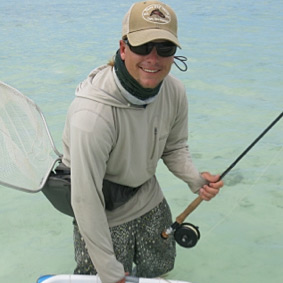
Peter Carlson, MS
Research Scientist
After graduating from UC Santa Barbara in 2008 with a B.S. in aquatic biology, Peter worked as a subtidal research technician within the network of marine protected areas surrounding the Santa Barbara Channel Islands. In 2009, Peter managed a large-scale field study of fish and invertebrate recruitment in southern California’s rocky reef habitat. In 2013, Peter began his Master’s work at UCSB under Dr. Jennifer Caselle and Dr. Robert Warner. For his Master’s thesis, Peter investigated the role of large herbivores in coral reef resilience. Peter’s other research interests include the sustainability of catch and release fishing practices, and the ecology and conservation of tropical reef flats. When he is not in the water, Peter enjoys fly fishing and spending time in the mountains.
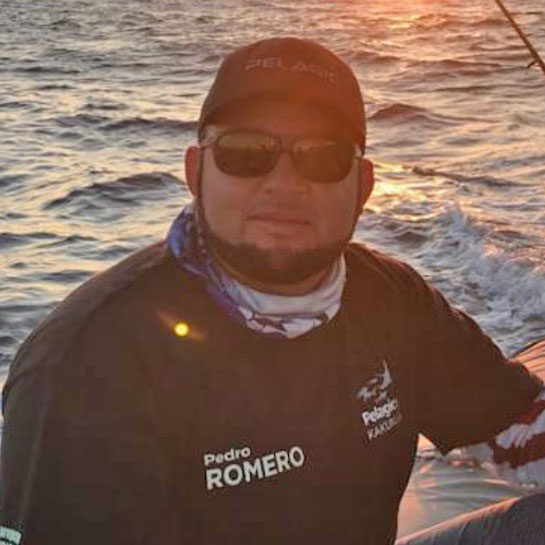
Pedro Romero
Field Technician
Pedro is a fisherman from Lopez Mateos, Baja California Sur. For many years, his livelihood came from shark fishing. Motivated by the development of sustainable fisheries in his hometown, he has recently collaborated with local conservation NGOs in a diversity of projects. Recently he joined Pelagios-Kakunjá where he works as a boat captain and aids on shark tagging efforts. His fishing experience was key in our shark capture efforts.


